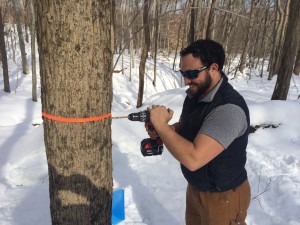
Kyle Siriano taps a maple tree in the forest behind Common Ground’s school building. See more pictures in the New Haven Register. Here are a few of Kyle’s favorite facts about making maple syrup:
- Maple sap is produced when starches stored in a tree’s roots break down into sugars, and diffuse upwards through the tree. It’s most concentrated in the most recent layer of a tree’s growth, just inside the bark.
- Sap really gets flowing when nights are below freezing and days are warmer — right around now!
- To get at the sap, people who make maple syrup drill a hole into the tree and stick in a metal or plastic tap that allows the sap to flow out into a bucket or tube.
- It takes about 40 gallons of sap to make 1 gallon of syrup — that’s a lot of time boiling the sap down to make syrup!
- Sugar maples (and black maples, which are rare in our area) produce the sap with the highest sugar concentrations — but you can also tap rep maples, norway maples, box elders, and other members of the Acer family of trees. Ne ready: It takes even more sap to make syrup from these other kinds of trees!
- In general, maples can be tapped when they are about 16 years old and 10″ in diameter. As trees get bigger, you can place more taps.
- Connecticut maple syrup producers place about 78,000 taps in maple trees each year, and produces more than 20,000 gallons of syrup!
By: Kate Bovarnick
There’s a gleam in his eye, and zeal in his voice, when Kyle Siriano talks about maple sugaring. “Look at that maple drip, it’s going to start filling up the bag soon,” exclaims Kyle to a group of roughly 15 elementary students, who seem to be just as entranced with the slowly moving liquid. Kyle — who came on board as Common Ground’s site manager in November — goes on to explain the entire process of Maple Syruping, from the marking of the maple trees, to the tapping and collecting of sap, the boiling process, and finally ending in the main event, the eating and tasting of the product. This may read like a lot of information to describe, especially considering the audience he was addressing consisted of an age group not often associated with the longest attention span. But the students listen attentively, interrupting only to ask questions like, “Why do we tap trees in the winter when there is still snow on the ground?” Many community members are already part of Common Ground’s tree tapping tradition, sharing the sweet results at our Maple Syrup Festival and Pancake Brunch (this year on Saturday, March 15, 11:00 am – 2:00 pm). But this year’s production is a little different. Kyle is leading the cause this year and is determined to make it not only the largest maple syrup collection, but also the most meaningful. “I am maybe the most enthusiastic maple person I know,” says Siriano. “But I really see it as a multifaceted activity. It can be used as a recreational sport, a chance to get outside, a learning opportunity.” The learning opportunity is apparent as Kyle addresses the elementary students on Common Ground’s site for a field trip, explaining photosynthesis and how the temperature affects the collection of sap. Common Ground’s chemistry class is also using the sweet liquid as a learning tool, to better understand solutions and concentration of the sap. Last week, students strapped on snowshoes and visited the sugarshed to collect samples of sap and measure its density. “I want to involve all aspects of the organization in the syruping process,” Kyle reflects as he shares the graph the chemistry class made, measuring the density vs the hours the liquid was boiling. In March the syruping process will culminate in our annual Maple Syrup Festival and Pancake Brunch, where Kyle is hoping to have the largest volume of maple syrup produced from Common Ground’s trees yet. “Eventually I think it would be neat if Common Ground could be a hub for maple syrup, but for now I’m focused on producing this year’s bounty,” Kyle says. Make sure to stop by our site on March 15, to taste the syrup for yourself.
CG’s chemistry class made a graph to show how density of maple syrup changed as it boiled

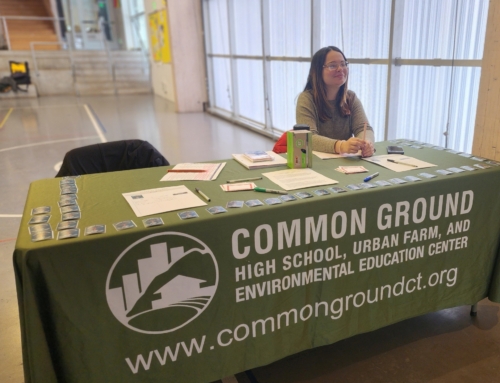
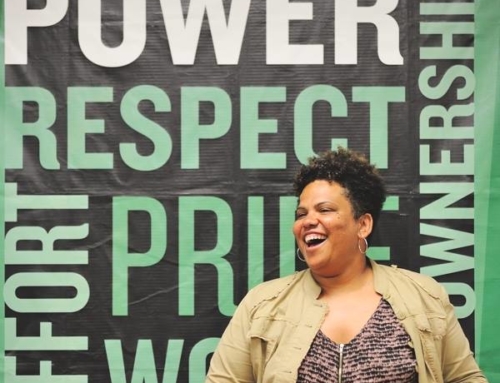
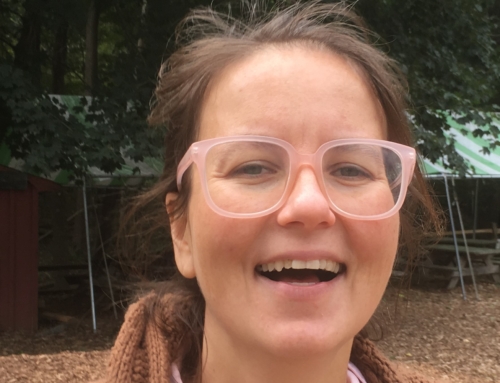
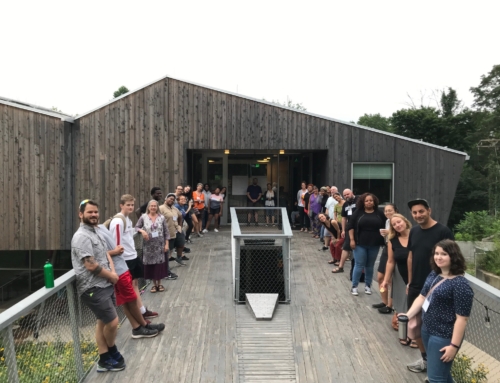
Leave A Comment